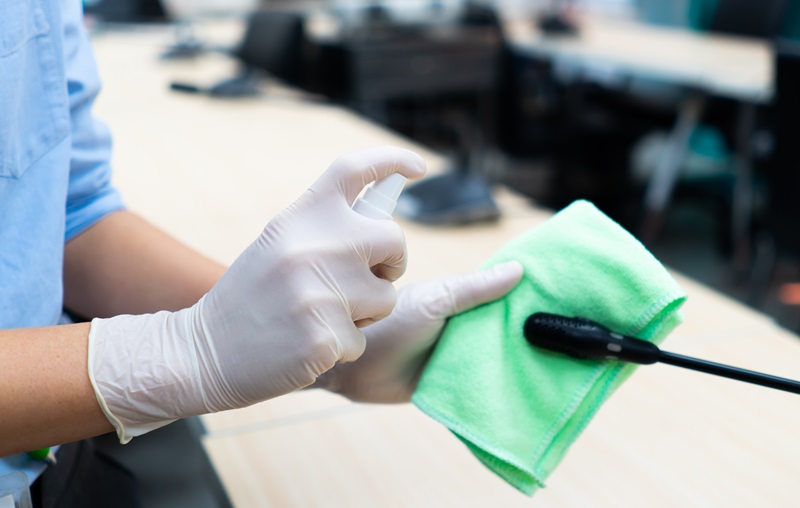Editor’s Note: This article was originally published in March of 2021 and has been updated on December 12, 2024.
COVID-19 cases are falling as vaccines are distributed, and we’re getting closer and closer to “normal” – whatever that was more than two years ago. However, the world is now more conscious of germs and viruses than it ever has been, and now sanitization of frequently touched surfaces is second nature. For AV pros, that should apply to some equipment frequently touched by end users – especially microphones.
Tips for Microphone Sanitization
As businesses start preparing for full or partial openings, here are a few tips on microphone sanitization so they are safe for use:
- Clean and disinfect frequently touched surfaces between each use
- Use an isopropyl alcohol and water solution
- Don’t let liquid get inside the microphone
- Use disposable microphone covers
- Be wary of heat treatments when washing
This information is sourced from microphone manufacturers like Shure, Poly, Sennheiser as well as the CDC, higher education institutions and the Recording Academy.
Clean and disinfect frequently touched surfaces between each use.
When we speak or breath, tiny droplets leave our mouth. As we have learned over the course of the pandemic, those droplets from a person infected with COVID-19 can infect another person if they find their way into a person’s nose our mouth.
It’s unlikely that droplets will leave the microphone once on it, a person’s mouth comes dangerously close to touching the microphone.
In some cases, a person’s lips may accidentally touch the microphone, and that could lead to infection. Unplug the microphone from all power sources before sanitizing it.
Use an isopropyl alcohol and water solution
Isopropyl alcohol is a powerful germ-killing compound, but it evaporates too quickly on its own and might not last long enough to kill all the necessary germs. Adding some water will help extend the compound’s germ-killing properties for enough time to work.
A 70:30 solution is recommended to disinfect products, but a solution of 90:10 can help speed up drying time and reduce the risk of seepage.
Apply the solution to a microfiber cloth and wipe the entire surface of the microphone. Using other cleaners like bleach, Lysol spray or hydrogen peroxide could damage the microphone.
Don’t let liquid get inside the microphone
Avoid applying liquid to ports and openings, like screens, mesh, charge contacts. If liquid gets inside the microphone and reaches the diaphragm, it could damage the device.
Use disposable microphone covers
There are several kinds of disposable microphone covers, including cloth or plastic, that advertise the ability to keep microphone windscreens sanitary. However, they would need to be replaced before and after each use.
When taking them off the microphone, turn them inside out so the area that could contain droplets is inside. Safely dispose of the cover and apply a new cover. We should note that these covers could cause some slight deterioration in audio quality.
Be wary of heat treatments when washing
The jury is still out over whether UV-C radiation and heat treatments can kill the COVID-19 virus, but those treatments can also harm equipment. Hand washing microphones using a degreasing detergent at lower temperatures should be effective against the fat coating on the virus.
Pass these best practices of microphone sanitization on to your clients so they can help protect their employees and customers and get the most out of their investment.










